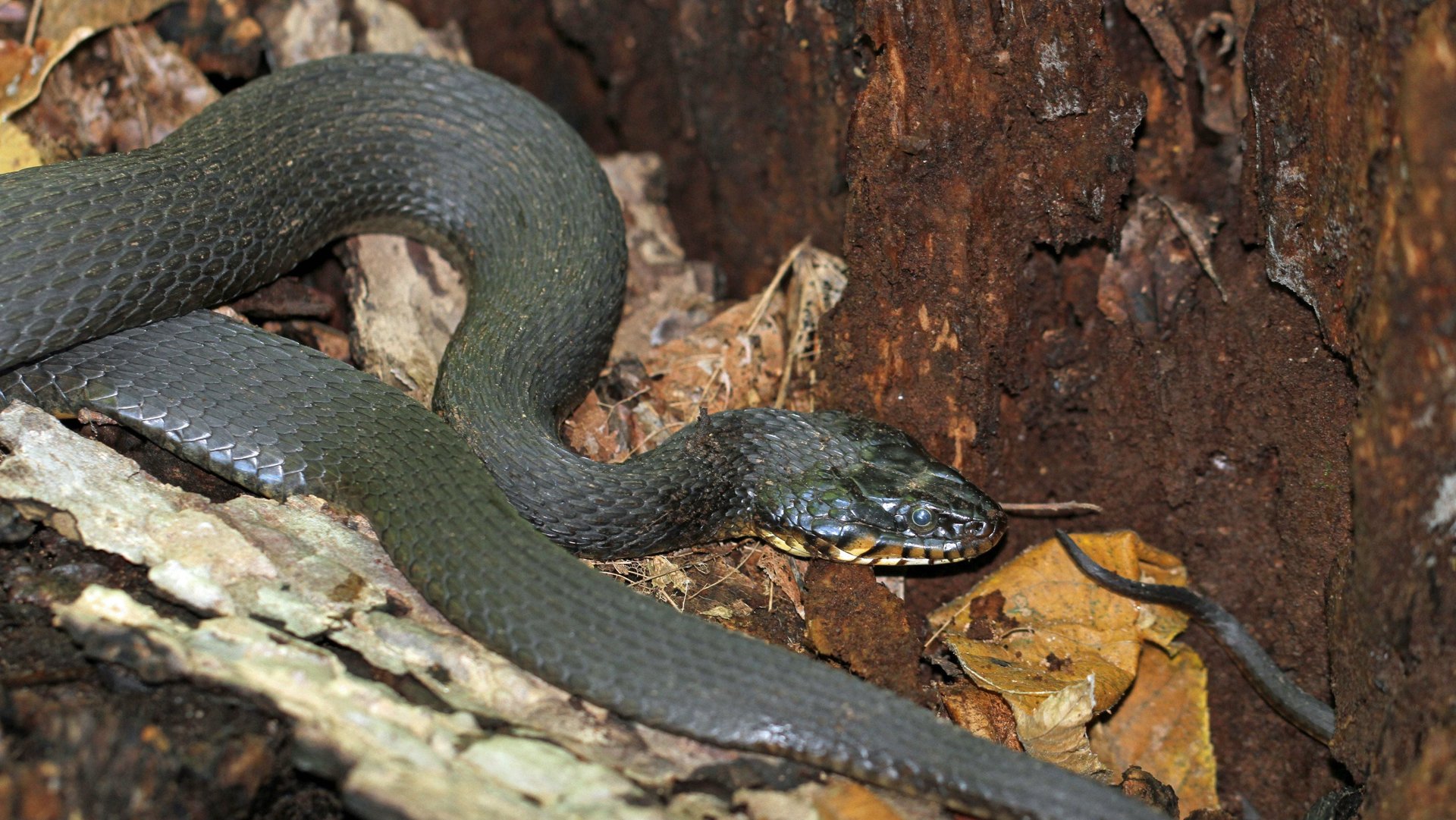Virgin snake gives birth for the second time in two years
A snake in a Missouri nature center has twice given birth in the last two years—despite having no contact with a male snake in the last eight years, according to her keepers. The yellow-bellied water snake’s virginal feat marks the first example of asexual reproduction in her species.


A snake in a Missouri nature center has twice given birth in the last two years—despite having no contact with a male snake in the last eight years, according to her keepers. The yellow-bellied water snake’s virginal feat marks the first example of asexual reproduction in her species.
Though rare, parthenogenesis—the scientific term for when offspring develop from unfertilized eggs—can occur in some insects, fish, amphibians, birds and reptiles, Jeff Briggler, a herpetologist in Missouri’s conservation department, told the Associated Press.
A single snake species, the Brahminy blindsnake, always reproduces asexually; all others typically need both males and females to conceive. However, rare instances of parthenogenesis have been spotted in around 10 other snake species, including pit-vipers, reticulated pythons, and boa constrictors.
As with the Missouri water snake, most of these virgin snake births have only been studied in captivity, where researchers can be certain that the female has not had contact with a male. Due to this relatively small sample size, it’s uncertain whether documented instances of snake parthenogenesis are intentional attempts to reproduce or reactions to a virus or infection. It’s also unclear whether offspring of virgin births can go on to reproduce. However, in some snakes—like copperheads—new research (paywall) suggests immaculate conception may confer an evolutionary advantage passed down through fertile male offspring.
There’s no definite answer yet about whether the Missouri water snake’s babies can reproduce. The offspring she just gave birth to didn’t survive. However, the two asexually-reproduced snakes that were born last summer are alive and well, and are on display at the Missouri Nature Center.
It’s possible that the Missouri snake isn’t quite as miraculous as she appears: She may have conceived using sperm stored inside her body during her time in the wild, some eight years ago. However, since sperm usually dies after a year, this seems unlikely.
Lead image by Greg Schechter on Flickr, licensed under CC-BY-2.0.